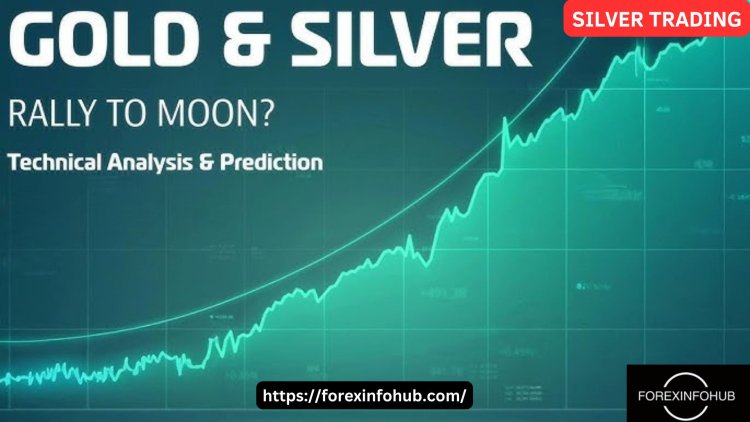Role of Technical Analysis in Silver Trading
Learn how technical analysis plays a crucial role in silver trading. Discover key tools, strategies, and tips to make smarter trading decisions in a volatile market.
Share this Post to earn Money ( Upto ₹100 per 1000 Views )

When it comes to silver trading, making informed decisions is crucial. One of the most effective methods traders use to forecast price movements and determine entry and exit points is technical analysis. But what exactly is technical analysis, and why does it play such a vital role in the silver market?
What Is Technical Analysis in Silver Trading?
Technical analysis is the study of historical price data, trading volume, and market trends to predict future price movements. Instead of focusing on the fundamental value of silver (like supply, demand, or geopolitical factors), technical analysis uses charts, indicators, and patterns to make trading decisions.
This method is especially popular among silver trading who deal in short-term trades, such as intraday or swing trading, where timing is everything.
Why Technical Analysis Matters in Silver Trading
The silver market is known for its volatility. Prices can swing due to factors like economic data, industrial demand, inflation fears, or movements in the U.S. dollar. In such a dynamic environment, relying solely on news or fundamentals can leave traders behind the curve.
That’s where technical analysis in silver trading becomes essential. It helps traders spot trends early, identify reversal points, and place trades with greater precision.
Key Tools of Technical Analysis in Silver Trading
Here are the most commonly used tools and indicators in silver trading:
-
Candlestick Charts
Candlestick patterns reveal important information about market sentiment. Patterns like Doji, Engulfing, or Hammer often indicate trend reversals or continuation. -
Moving Averages (MA)
Traders use simple or exponential moving averages (SMA/EMA) to smooth out price fluctuations and identify trends over time. -
Relative Strength Index (RSI)
RSI helps determine whether silver is overbought or oversold, indicating potential reversal zones. -
MACD (Moving Average Convergence Divergence)
This indicator shows the relationship between two moving averages. It helps confirm trend direction and momentum. -
Support and Resistance Levels
These are price levels where silver historically tends to bounce or reverse. They’re crucial for planning entry and exit points. -
Volume Analysis
Changes in trading volume often precede big price moves. Volume spikes can validate breakouts or trend reversals.
How to Use Technical Analysis Effectively in Silver Trading
To make the most of technical analysis, silver traders should:
-
Combine multiple indicators: Relying on one tool can lead to false signals. Using a combination increases accuracy.
-
Backtest your strategy: Before applying a method to live trading, test it on historical data to assess its performance.
-
Stick to a trading plan: Discipline is essential. Avoid emotional trading based on sudden news if it contradicts your technical setup.
-
Use stop-losses: Even the best technical setups can fail. Managing risk is as important as predicting market direction.
Advantages of Technical Analysis in Silver Trading
-
Real-Time Decisions: Helps traders act quickly based on current price movements.
-
Visual Clarity: Charts and patterns make it easier to understand market behavior.
-
Repeatable Strategies: Many patterns and signals repeat over time, offering consistency.
-
Scalability: It works for different timeframes—be it hourly, daily, or weekly trading.
Limitations to Keep in Mind
While technical analysis in silver trading offers many advantages, it's not foolproof:
-
Lagging Indicators: Many tools follow price movement and may provide late signals.
-
Overcrowding: When too many traders use the same indicators, patterns can become predictable and less effective.
-
Ignored Fundamentals: Technical analysis does not factor in real-world events like policy changes or economic data, which can cause price shocks.
Conclusion
The role of technical analysis in silver trading cannot be overstated. From identifying trends to timing trades, technical tools help traders make more informed and strategic decisions. However, it’s best used in combination with basic market knowledge and solid risk management.















